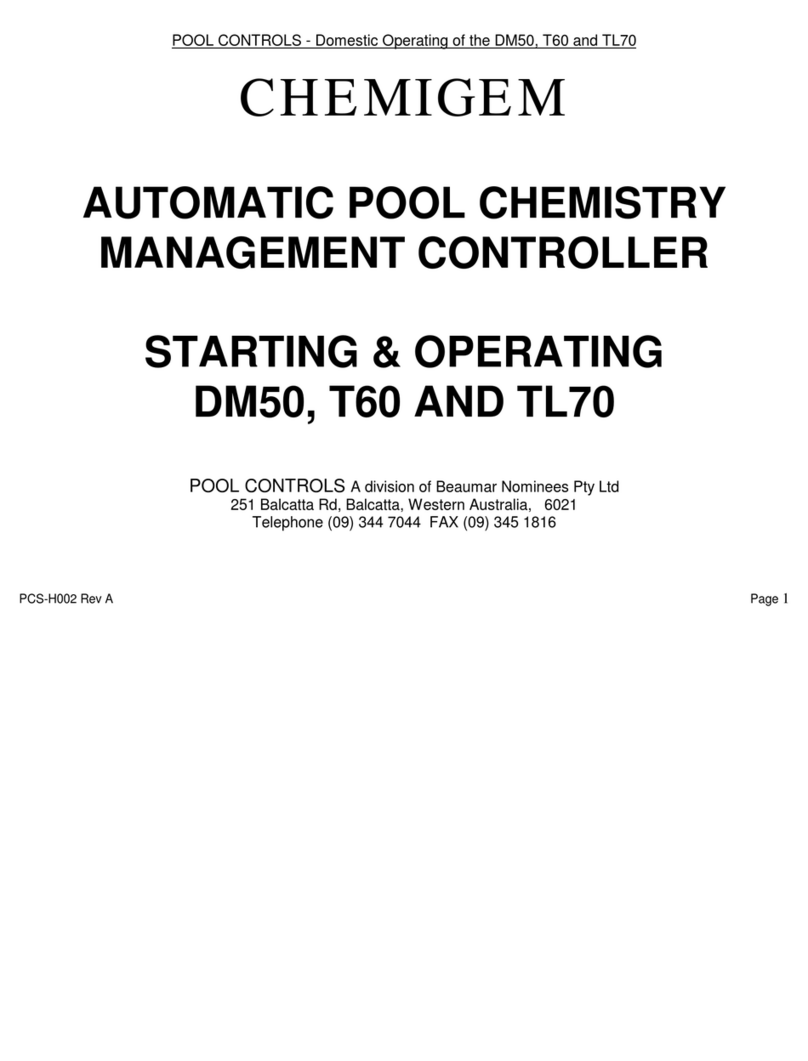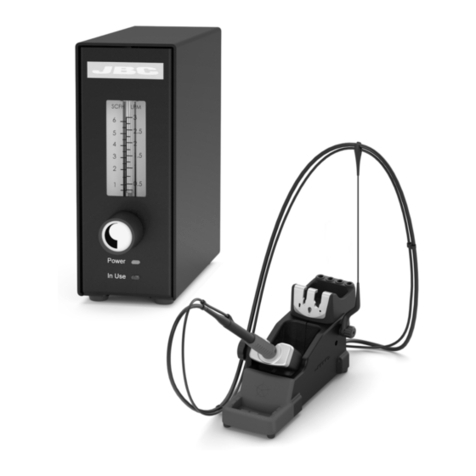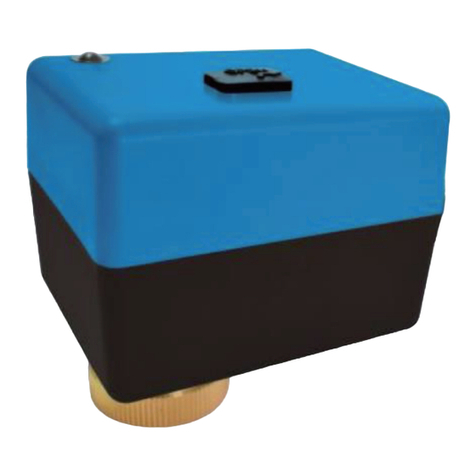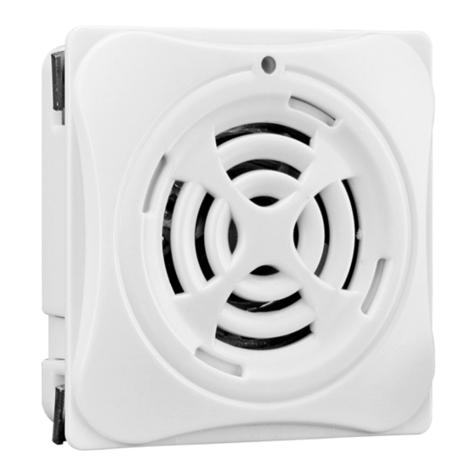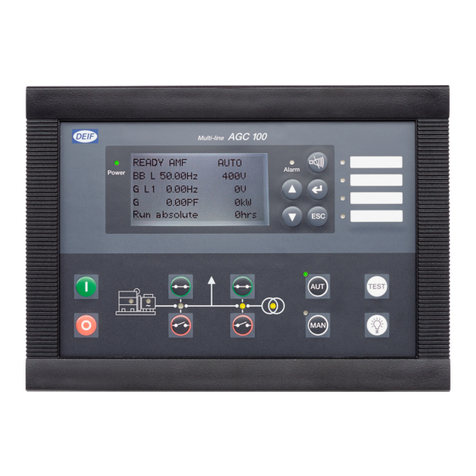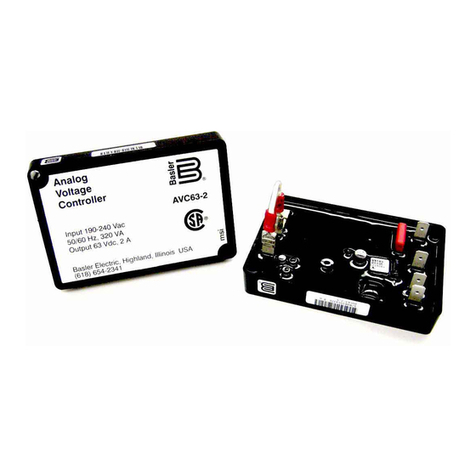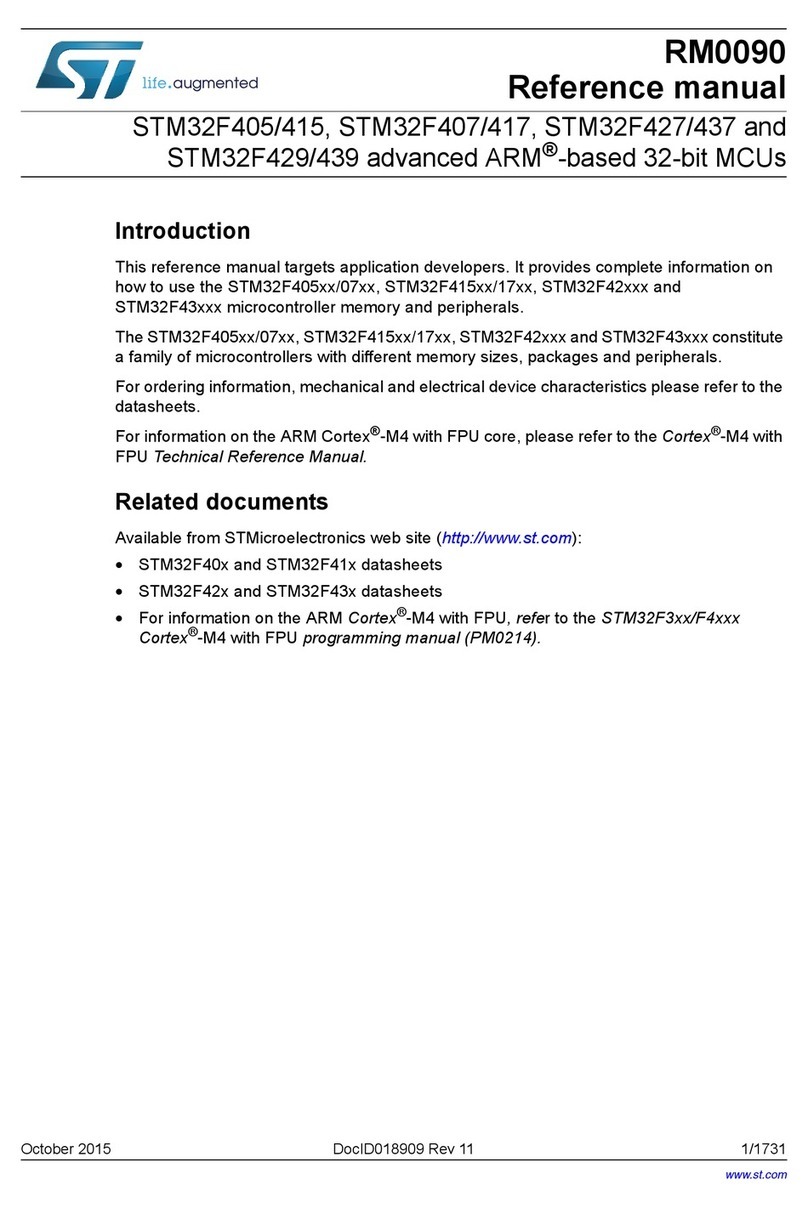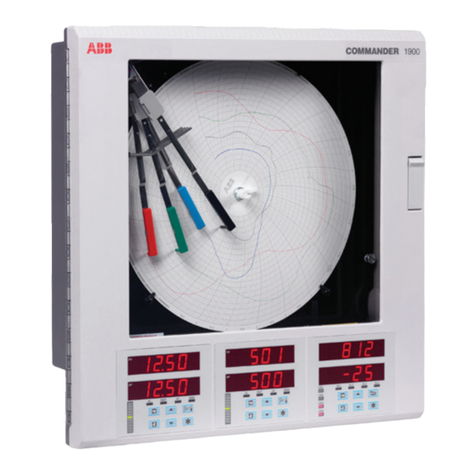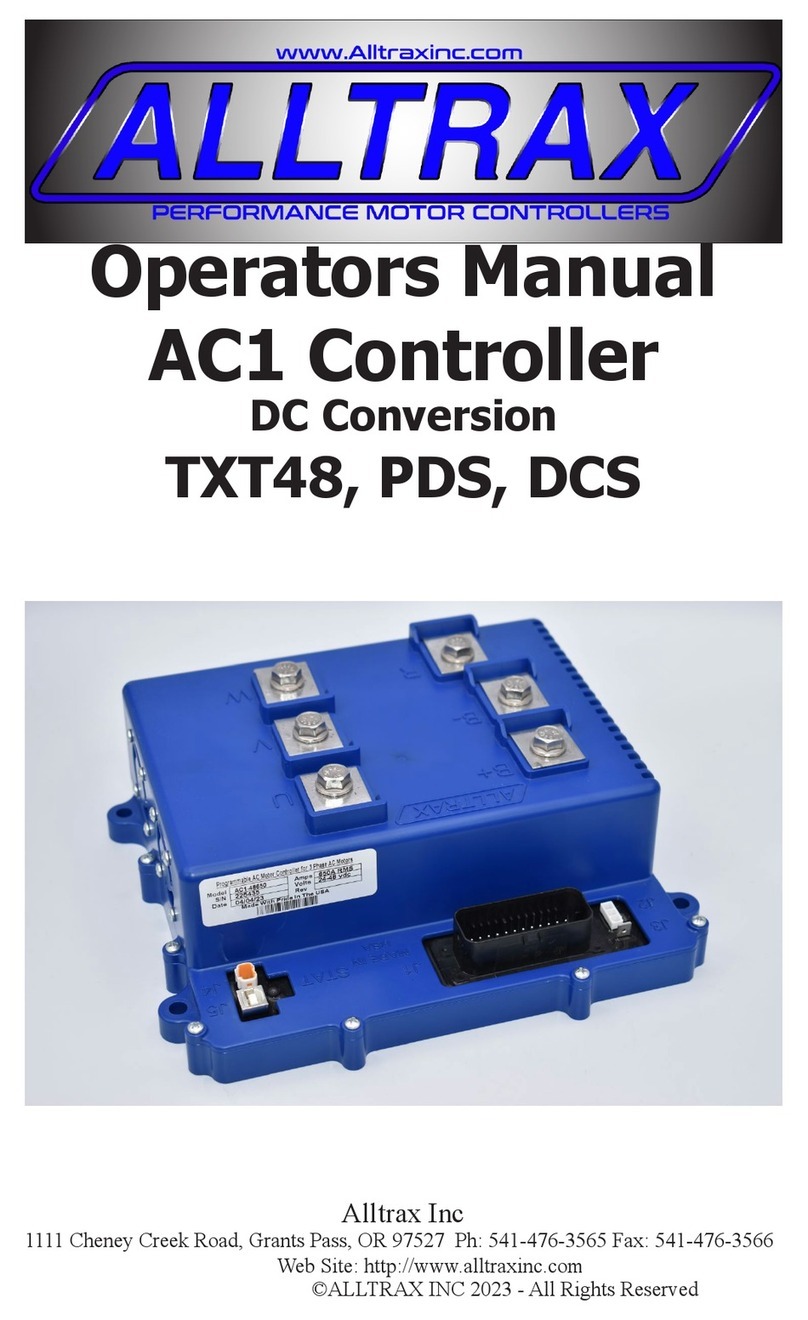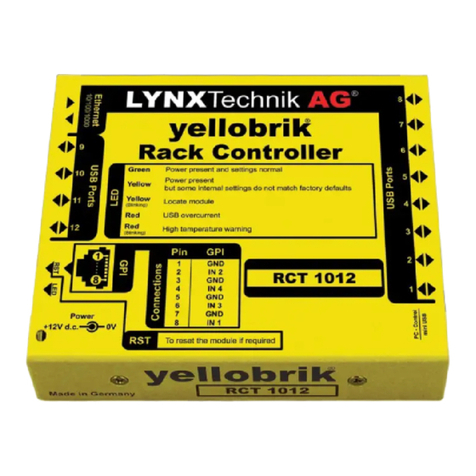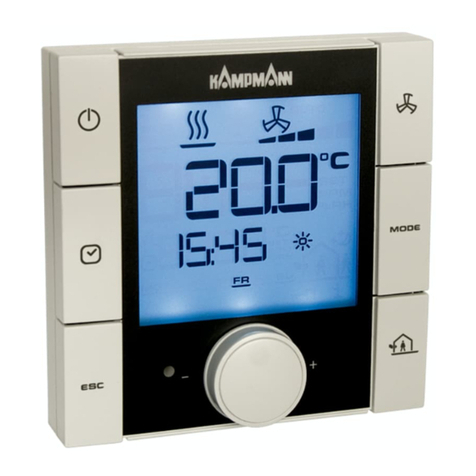Chemigem T61 How to use

AUTOMATIC POOL CHEMISTRY
MANAGEMENT CONTROLLER
STARTING & OPERATING
DM51 and T61
POOL CONTROLS A division of Beaumar Nominees Pty Ltd A.C.N. 008 934 549
251 Balcatta Rd, Balcatta, Western Australia, 6021 Telephone (08) 9344 7044 FAX (08) 9345 1816

POOL CONTROLS - Domestic Operating of the DM51 and T61
PCS-H003 Rev C Modified for www. 25/01/06 Tony Brown Page 2
DM51 CONTROLLER (fig 1)
T61 CONTROLLER (fig 2)

POOL CONTROLS - Domestic Operating of the DM51 and T61
PCS-H003 Rev C Modified for www. 25/01/06 Tony Brown Page 3
Introduction
The Chemigem controller is designed to measure and automatically adjust the free Chlorine and pH
(Acid) levels in your water. These levels will be set by You using the control knob(s) on your
Chemigem. Once you have set your levels you should leave the controller to adjust them automatically.
What the Chlorine indicator lights mean
Note : If any red warning lights are on - test with a reliable test kit.
Green feed light “on” and panel looks like
The black flashing square will be left of the arrow points.
This indicates that the free Chlorine level in the pool is below the level set by the control knob and
feeding will take place every 3 minutes until the required level is reached. When the green feed light is
flashing the Chlorine valve is open and Chlorine is being sucked from the drum into the line.
Red low light “on” and Chemigem alarm sounding . (Left hand light) and the display looks like the
diagram below :
This indicates the free Chlorine level in the pool is considerably lower than the settings but the
Chemigem will still be able to restore the level in a short period of time. The warning tone (alarm) may
be switched off if it is annoying, but remember to switch it back on again when the levels of Chlorine
have been restored.
Low Chlorine levels could be due to the following : -
1) Initial switching on of the unit
2) Chlorine drum is empty.
3) The control knob having been turned clockwise to increase the Chlorine level.
4) The filter has been off for a long period of time on a hot day.
5) The stabiliser level is very low or non existent and causing a high rate of Chlorine loss.
NB : Stabiliser level is recommended to be 50 - 70 ppm.
6) Poor circulation.
If the symptoms persist (the low alarm continues) then the following could be the cause:-
1) Poor suction because of :
a) Filter in need of a backwash.
b) The pump lint pot clogged.
If symptoms still persist check with the supplier.
Red excess light ‘on’ (right hand light) and the display looks like the diagram below :

POOL CONTROLS - Domestic Operating of the DM51 and T61
PCS-H003 Rev C Modified for www. 25/01/06 Tony Brown Page 4
The level of free Chlorine in the pool water returning to the filter is well above the level set by the dial.
Should this be due to an intentional overdose of Chlorine it may be some days before the level of
Chlorine drops and the red light goes off.
NB : Re-positioning the control knob to a higher setting will switch the excess light off but will of course
continue maintaining the pool at the higher levels of Chlorine.
An excess Chlorine light showing occasionally, may be due to :
1) The control knob being changed to a lower setting.
2) Poor circulation in the pool leading to overdosing.
3) The pH having been lowered.
4) The pouring into the pool of the last litre or two of Chlorine from a nearly empty drum
about to be replaced.
Should the excess Chlorine warning persist, the causes are possibly:
1) pH in the pool is too low..
2) Poor circulation
What the pH indicator lights mean.
Note : If any red warning lights are on - test with a reliable test kit.
Green light ‘on’
This indicates that the pH level in the pool is above the level set by the control knob and feeding of Acid
will take place every 3 minutes to reduce it until the required level is reached. When the green feed light
is flashing the Acid valve is open and Acid is being sucked from the drum into the line
Either of the Red lights ‘flashing’ and Chemigem alarm sounding intermittently.
This indicates that the pH is either above 8.6 (right hand light) or below 6.8 (left hand light). The pH
section differs from the Chlorine section in that it has a lock-out mechanism and the Acid will not feed if
either of the red lights are flashing. (Altering the knobs will not make any difference)
High pH Alarm (right hand light) - Water is alkaline and has high pH.
If the right hand light is flashing and the display looks like the diagram above the pH is above 8.6 and the
pool water is low in Acid and high pH. (see Acid override switch below).

POOL CONTROLS - Domestic Operating of the DM51 and T61
PCS-H003 Rev C Modified for www. 25/01/06 Tony Brown Page 5
High pH levels could be due to the following : -
1) Initial switching on of the unit, especially in a new concrete pool.
2) Acid drum is empty.
3) Pouring of Chlorine into the pool.
Low pH Alarm (left hand light) - Water is acid and has low pH.
If the left hand light is flashing and the display looks like the one above the pH is below 6.8 and the pool
water has excess Acidand has low pH. The Chemigem will be unable to restore the levels and the lock-
out mechanism will be operating.
A Low pH alarm showing occasionally, may be due to :
1) Poor circulation in the pool leading to overdosing.
2) The pouring into the pool the last litre or two of Acid from a nearly empty drum about to
be replaced.
When the Low alarm light is flashing, a water test should be done immediately to check the pH - if it is
low, the appropriate amount of Soda Ash (Sodium Carbonate) or pool Buffer (Sodium Bicarbonate)
should be added straight away. (see table in the Appendix)
Acid Override Switch
In the event of the Chemigem being locked out in a High pH (low acid) condition, due to the Acid drum
being empty for a few days, it may be easily restored to an active state by pressing downwards the Acid
override switch. Overriding the lockout mechanism will only last until the main pump for pool water
circulation is turned off next.
NB : When this switch is held down the green light flashes and the pH valve is held open, which allows
the owner to manually add Acid.
Turning the Chemigem’s Alarms off
Chlorine
Use the switch (5) displayed in the diagram of “DM51 Controller Face ”. (see Fig 1.)
Acid (pH)
a) High pH alarm - operate switch No. 11 (fig 1.) momentarily.
b) Low pH Acid alarm - Turn the pH completely off by moving the centre switch (see Fig 1
“Controller Face ” diagram, switch No. 1) to the right and operate the ENTER switch..
NB - Remember, the alarms are there to warn you of significant chemical imbalances. Check the water
with a test-kit straight away and follow the fault finding programme or call your pool technician. Also,
do not forget to switch the alarm back on again when the water is back to normal.

POOL CONTROLS - Domestic Operating of the DM51 and T61
PCS-H003 Rev C Modified for www. 25/01/06 Tony Brown Page 6
Getting to know your control panel (see fig 1 and 2.)
Key Description
1Centre Switch
Switched to left followed by a down stroke on 11 shuts off Chlorine circuit.
When switched to right followed by a down stroke on 11 shuts off pH circuit.
2 Chlorine Control Knob
Sets the required level of sanitisation. Normally set to the “12 o’clock“ position, with the
white indicator vertically upright.
3 Chlorine “Feed waiting light”
Glows green when Chlorine levels in the pool water are lower than that set by the control knob.
Will flash on and off when the Chlorine solenoid valve is open. (normally 8 seconds every 3
minutes)
4 Low Chlorine warning light
Glows red when Chlorine in the pool water is considerably lower than the level set by the control
knob.
5 Left Switch
Switch to turn the warning alarm for Low Chlorine off.
The warning alarm sounds a continuous tone when the red Low Chlorine Light (4) above is
illuminated. To reactivate the alarm you will need to turn the Chemigem off and on again.
Also allows escape from the menu displays and returns the controller function to
standby condition.
6 Excess Chlorine warning light
Glows red when Chlorine levels in the pool water are considerably higher than the levels set by
the control knob (2).
NB There is no warning alarm which sounds when Chlorine is high.
7 pH Control Knob
Sets the required level of pH. Normally set to the “12 o’clock” position, with the white indicator
line vertically upright.
8 Acid “Feed waiting light”
Glows green when the pH level in the pool water is higher than that set by the control knob (7).
Will flash on and off when the pH solenoid valve is open. (Normally 7 seconds every 3 minutes)
9 High pH warning light
Glows red and flashes on and off when pH in the pool water rises above pH 8.6. When this light
flashes the pH circuits are locked and the valve will not open - See (11) Acid override switch.
A warning alarm sounds an intermittent tone in step with the flashing of the red light.
(one second on then one second off).

POOL CONTROLS - Domestic Operating of the DM51 and T61
PCS-H003 Rev C Modified for www. 25/01/06 Tony Brown Page 7
Key Description
10 Low pH warning light
Glows red and flashes on and off when pH in the pool water falls below pH 6.8. When this light
flashes the pH circuits are locked and again the valve will not open.
A warning alarm sounds an intermittent tone in step with the flashing of the red light. To turn
off warning tones see section on setting Chemical Levels.
11 Right Switch - Acid Override
When pressed downwards will disengage the pH lock-out mechanism in the case of high pH only
- thus permitting the Chemigem to feed Acid again. Overriding the lockout mechanism will only
last until the main pump for pool water circulation is turned off next.
When pressed down this switch also opens the Acid valve which allows the owner to manually
add Acid.
12 Liquid Crystal Display (LCD)
Displays the information needed to set the machine to the owner’s requirements and also shows
the current status of Chlorine and pH.
13 Pump/Timer Button option
When pressed will scroll through the three options.
Setting the levels
Actual Position Set Position
→←SET Chlorine (ORP)
→←SET pH
Actual Position Set Position
To begin with, set the control knobs with the white indicator lines in the 12 o’clock position. With these
factory settings this will give approximately 3.00 parts per million (ppm) Chlorine and pH 7.7.
Notes : a) The arrow points are in the central position.
b) The 12 o’clock position gives approximately 3.0 ppm Chlorine level when stabiliser is 50 ppm,
but if stabiliser is less than 30 ppm the same setting will only maintain approximately 1.0 ppm
Chlorine.
Chlorine will feed for 8 seconds and Acid will feed for a period of 7 seconds every 3 minutes until the
required levels are reached. The first time a Chemigem operates on a pool it will take 45 - 60 minutes to
fully adjust the level of pH and Chlorine. Thereafter it will normally restore the required levels in 15 - 20
minutes, so ensure that the pump is running for long enough to carry out these adjustments.

POOL CONTROLS - Domestic Operating of the DM51 and T61
PCS-H003 Rev C Modified for www. 25/01/06 Tony Brown Page 8
Calibration
The day following the installation of your Chemigem, and after the pool pump has been running for 30
minutes, check the level of Chlorine and pH with a good quality test-kit. If either of the levels are not
exactly where you want them, alter the settings of the control knobs a little. Clockwise will direct the
Chemigem to raise the Chlorine level and increase the pH ( reduces the acidity) chemical levels and vice
versa.
By moving the control knobs the arrow heads move along the display panel. The controller will then
dose the extra chemicals to bring the flashing black rectangle to the space between the arrow heads. (NB
: if you have selected lower levels of Chlorine, or higher levels of pH the correction time maybe
prolonged because you have asked for lower quantities of the correcting liquids (Chlorine or Acid) and
the removal rate is often slow.)
Notes : -
a) Altering the settings tells the controller what YOU want. The controller will only bring about
the changes as the pump circulates the pool water.
b) Chemigems are able to add chemicals quickly to adjust levels upwards, but cannot remove
excess chemicals - these may take several days to reduce.
c) Remember increasing the pH level means that YOU are asking for less Acid in the pool.
Pool Circulation
To enable the Chemigem controller to work at its most efficient, the mixing of the pool water has to be as
quick and complete as possible. By positioning the return nozzles (eyeballs) to the pool so that the main
pool water body rotates (swirls) is the best way to achieve this. Under no circumstances should the
eyeballs be positioned to produce opposing flow patterns.
The Multi electrode senses the Chlorine and pH levels as the water travels towards the pump, so if the
mixing of the pool water is slow the Multi electrode will not receive the signal until large amounts of
chemicals have been added to the pool. When the Multi Electrode finally receives the signal the pool will
be overdosed and the excess lights may be lit.
This problem could occur in the following situations:
1) When the pool plumbing is arranged with the skimmer box at one end of the pool and the two inlets
in the opposite end wall discharging down both sides, thereby effectively preventing any swirling action.
This can be overcome by pointing both inlet nozzles to the same side of the pool to create the required
swirl.
2) When suction type automatic cleaners are fitted so the water is being drawn from the bottom of the
pool and inlets are pointing upwards causing a layering effect. The water returning from the filter with
the added chemicals will take a long time to mix and reach the bottom of the pool under these conditions
and again overdosing will result. The problem can be overcome by pointing one return nozzle
downwards, but taking care not to create an opposing current to the main swirl.

POOL CONTROLS - Domestic Operating of the DM51 and T61
PCS-H003 Rev C Modified for www. 25/01/06 Tony Brown Page 9
Alternative Panel Displays
Should you wish to display pH values as numbers together with sanitisation levels as millivolts ORP your
Chemigem is able to display these values.
To change the display to numeric values :
1. Operate the right switch (11) upwards towards MENU.
(note : display will revert back to default version in 10 seconds)
2. Operate the centre switch number (1) towards the right twice.
3. Operate the right switch number (11) downwards to display the numeric settings.
To revert back to the factory set display repeat steps 1 to 3.
When in the numeric display mode the operation of the control knobs will change the set values shown at
the right hand side of the screen.
Notes : The factory set levels are :
1. Chlorine (ORP) - 650 millivolts. (This will destroy micro organisms in approximately one second.)
2. pH - 7.7 pH. (This should keep total alkalinity values between 90 and 100ppm.)
Setting the Time for your 24 hour clock. (Option only available on T61)
1. Obtain the Main Menu by pressing the right hand switch upwards once towards the MENU symbol .
2. Using the central switch press towards the right hand side once to make the word CLOCK flash on and
off and then press the Right hand switch downwards once towards the ENTER symbol.
3. To change the Hours press the Right hand Switch downwards once for each hour you wish to advance
the time. Note : you cannot go backwards with the time adjustments; should you make a mistake
continue scrolling through until you reach the correct figure again.
4. To change the minutes move the Centre Switch to the right once to cause the minutes to flash on and
off, then depress the Right hand switch once to advance the minutes one minute for each minute you
wish to advance the time.
After 15 seconds the display will revert back to the stand-by format. To commit this to memory -
unplug the Chemigem, wait 5 seconds and then plug it back in again..
Setting the required pump operating times. (Option only available on T61)
1. Obtain the Main Menu by pressing the Right Hand switch upwards once towards the MENU symbol.
2. The word TIMER will be flashing and it may be now selected from the menu by pressing the Right
Hand Switch downwards once towards the ENTER symbol.
3. The first timing on the pump may now be selected - it is designated PROG 1.
4. To select starting time hours move the flashing symbol to the right by using the Centre Switch and
press to the Right once. Now the hours for START will be flashing. To increase the hours press the
Right hand switch downwards once for each hour you wish to advance the start time.
5. To select the starting time minutes move the flashing symbol to the right with the centre switch and
advance the minutes by 5 minutes each time by pressing the Right Hand switch down.
6. To select the stop times move the flashing symbol to the figures beneath STOP at step (4) above and
work through steps (4) and (5).
7. For other Start and Stop times select PROG 2, PROG 3 etc by repeating Steps (1) and (2) and pressing
the right hand switch down once for every advance in PROGRAMME number.
8. Having selected a PROGRAMME number repeat steps (4), (5) and (6) above to set start and stop
times.
9. To commit these to memory - unplug the Chemigem, wait 5 seconds and then plug it back in again.

POOL CONTROLS - Domestic Operating of the DM51 and T61
PCS-H003 Rev C Modified for www. 25/01/06 Tony Brown Page 10
APPENDIX

POOL CONTROLS - Domestic Operating of the DM51 and T61
PCS-H003 Rev C Modified for www. 25/01/06 Tony Brown Page 11
FAULT FINDING CHART
INDICATION REMEDY OR PROBLEM
SANITIZER (Chlorine) SANITIZER (Chlorine)
Low alarm sounds continuously
and pool sanitizer low 1. Sanitizer container empty
2. No suction due to filter in need of
backwash or pump lint basket clogged.
Low alarm sounds for a period (up to 30
minutes) when pump starts Indicates that sanitizer level in the pool is
dropping off abnormally when the pump is off.
Can be caused by:
1) Low stabiliser content
2) Long period between filter cycles
3) Very hot weather and high pool usage
when filter is off – change filter times
High sanitizer usage, low light on & pool sanitizer
too high Faulty, dirty or expired Multi-Electrode.
Try cleaning by dipping end of Multi-Electrode in
30% Hydrochloric acid for 30 seconds.
High sanitizer usage with pool sanitizer normal
and indicator lights normal. 1) Stabiliser content too low
2) Continuous use of waterfall or air jets or
water temperature very high.
3) Heavy usage.
High sanitizer usage with pool sanitizer high and
high indicator on. Leaking solenoid valve due to damaged
diaphragm. Replace diaphragm or valves.
pH pH
Low pH indicator light flashing and pool pH
abnormally high. 1) Acid container empty
2) Filter needs backwashing
3) Blocked feed line or sinker filter. Rectify
and adjust pool into range manually.
Low pH indicator light flashing and pool pH
abnormally low. Leaking solenoid valve.
Immediately adjust pool manually and remove
acid tube from supply until fault rectified.
High pH indicator light flashing and pool pH
abnormally low. Expired or faulty multi-electrode. Immediately
adjust pool manually. Change multi-electrode.

POOL CONTROLS - Domestic Operating of the DM51 and T61
PCS-H003 Rev C Modified for www. 25/01/06 Tony Brown Page 12
Appendix page 1
RECOMMENDED CHEMICAL LEVELS as per AS 3633
The following chemical parameters have been found to provide the best results combined with the
most economical use of all chemicals where a Chemigem controller is fitted to a domestic pool.
Note: A heated pool will require a higher level of chlorine than an unheated pool to maintain the
same level of sanitisation.
CHLORINE : 1.0 to 3.0 ppm.
: 2.0 to 3.0 ppm.
pH BALANCE : 7.0 to 7.8
TOTAL ALKALINITY : 60 to 200 ppm.
CALCIUM HARDNESS : 100 TO 500 ppm.
STABILISER : 30 TO 50 ppm.
DOSAGE RATES
Chlorine
1.6 grms Calcium Hypochlorite per 1.000 litres water = 1.0 ppm. Chlorine.
8 mls Sodium Hypochlorate = 1.0 ppm. Chlorine.
pH Balance
8 mls HCL (33%) per 1,000 litres of water = 0.1 reduction in pH balace.
80 grms Sodium Bicarbonate per 1,000 litres of water = 0.1 increase in pH balance.
1.5 grms Sodium Carbonate per 1,000 litres of water = 0.1 increase in pH balance.
TOTAL ALKALINITY
20 GRMS OF Sodium Bicarbonate per 1,000 litres of water = 10 ppm. increase in Total Alkalinity.
CALCIUM HARDNESS
11 GRMS Calcium Chloride per 1,000 litres of water = 10 ppm increase in Calcium Hardness.
14 grms Calcium Sulphate per 1,000 litres of water = 10 ppm. increase in Calcium Hardness.
STABILISER
10 GRMS Cyanuric Acid per 1,000 litres of water = 10 ppm. increase in Cyanurates.
SALT
500 grms Sodium Chloride per 1,000 litres of water = 500 ppm. increase in salt level.
Appendix page 2

POOL CONTROLS - Domestic Operating of the DM51 and T61
PCS-H003 Rev C Modified for www. 25/01/06 Tony Brown Page 13
Manual Operation of Pumps
1) If the pump is switched on and off by the automatic timing control, it may be
switched on by pressing the pump button once. The display will now indicate
that the pump has been turned on manually for one hour.
2) Similarly if the pump has been switched on by the automatic timing control it
may be switched off manually by pressing the pump button twice. The display
will now indicate that the pump has been turned off manually for one hour.
3) By repeatedly pressing the pump button the controls will scroll through the 3
options of Automatic Timing, on for 1 hour, off for one hour.
NUMERIC VALUES DISPLAY
If display of numeric values is essential to your operation we strongly recommend that the Multi-
Electrode be re-calibrated on a monthly basis, or more frequently should any inaccuracies be
detected.
WHAT IS ORP?
For many years pool and spa operations in many parts of the world have used Oxidation–
Reduction-Potential (ORP or REDOX) values as a measure of sanitizer
activity in water. ORP is a measure of the oxidising properties of the sanitization chemicals
(Chlorine or Bromine) in the water and is easily monitored by a sensor.
When a sensor is placed into water containing Chlorine or Bromine it behaves like a battery and
creates a small but measurable electric voltage. This is known as free Chlorine or the working
Chlorine. The World Health Organisation standards have
Found that if ORP is maintained at 650mV the kill time of bacteria is just a fraction of a second. If
the ORP is lowered to say 500mV the same organisms will take up to 45 mins. to kill.
Example of a numeric display
Actual ORP Set ORP
Actual pH Set pH
You may change the values (right hand figures) by turning the control knobs. When the white
indicator line is in the 12 o’clock position the settings will be 650mV ORP Chlorine and pH 7.7. For
further information on setting levels see page 7.
Appendix page 3
450 SET Æ650
7.7 SET Æ7.7
Chlorine (ORP)
pH
This manual suits for next models
1
Table of contents
Other Chemigem Controllers manuals
Popular Controllers manuals by other brands
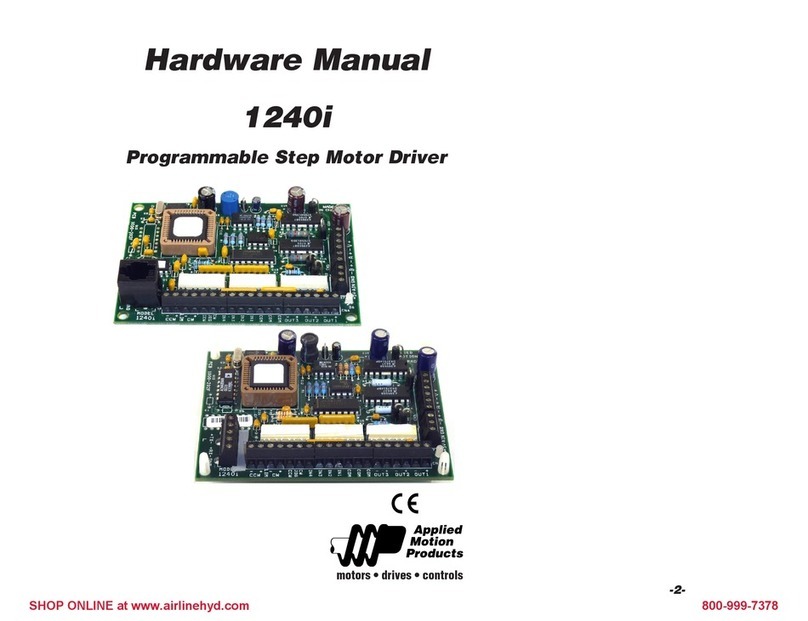
Applied Motion Products
Applied Motion Products 1240i Hardware manual
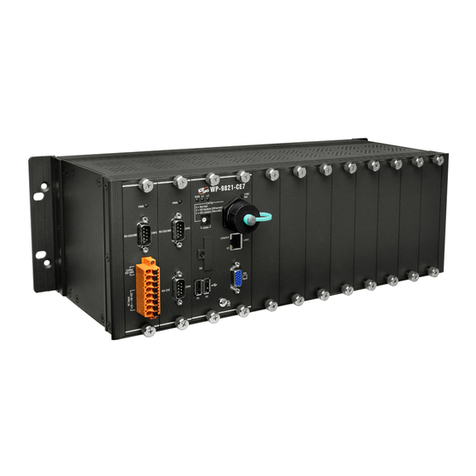
ICP DAS USA
ICP DAS USA LP-9821 quick start guide
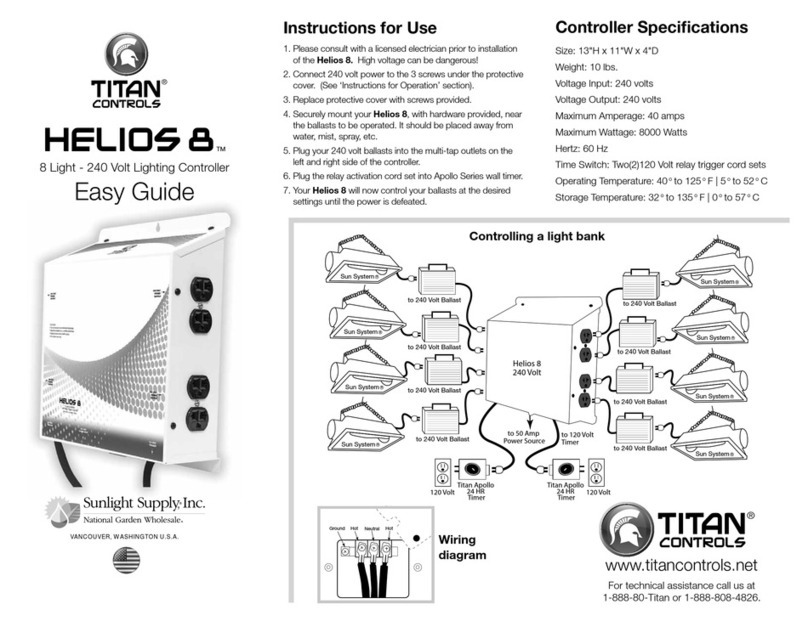
Sunlight Supply
Sunlight Supply TITAN CONTROLS HELIOS 8 Easy guide
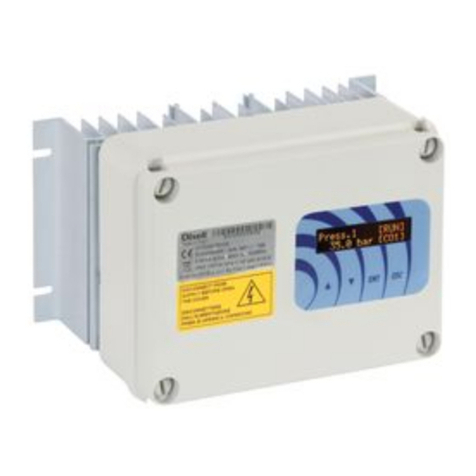
Emerson
Emerson Dixell XV308K Quick reference guide
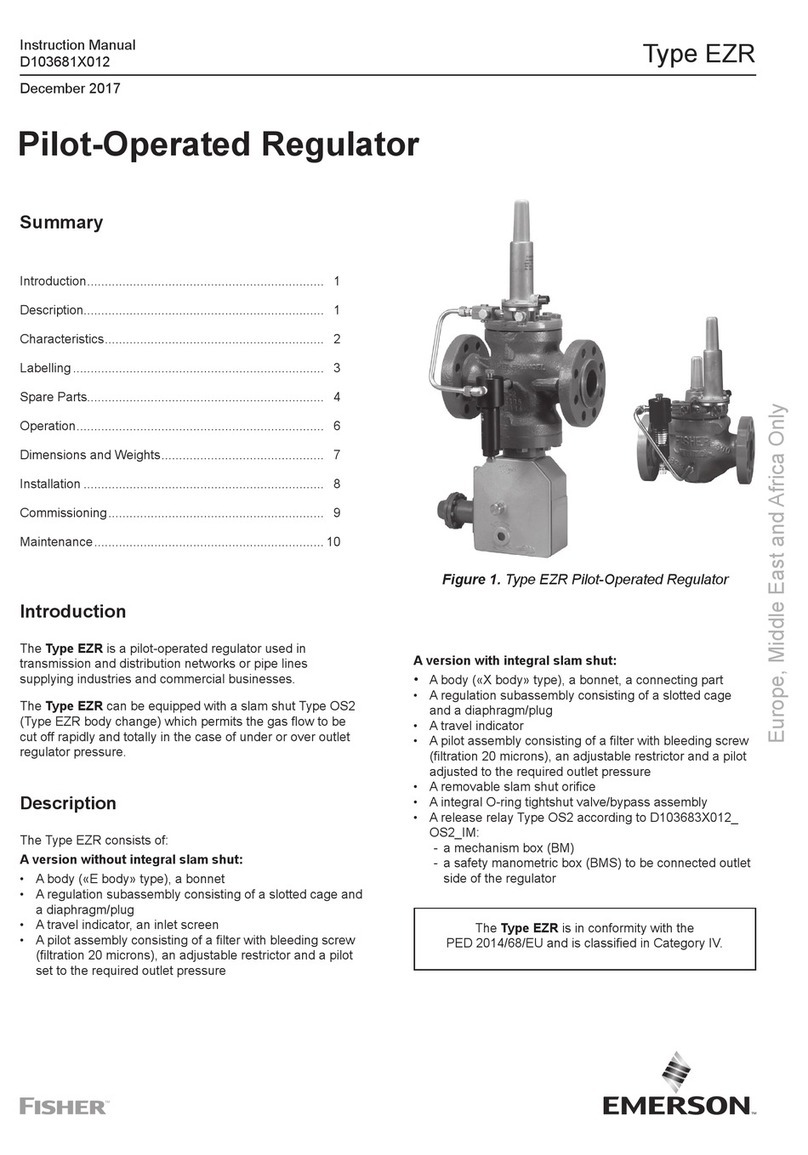
Emerson
Emerson Fisher EZR series instruction manual
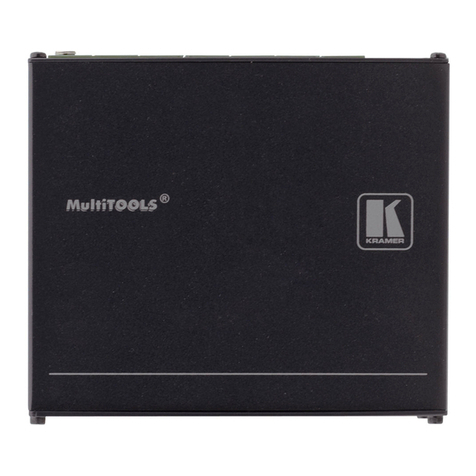
Kramer
Kramer SL-12 user manual

